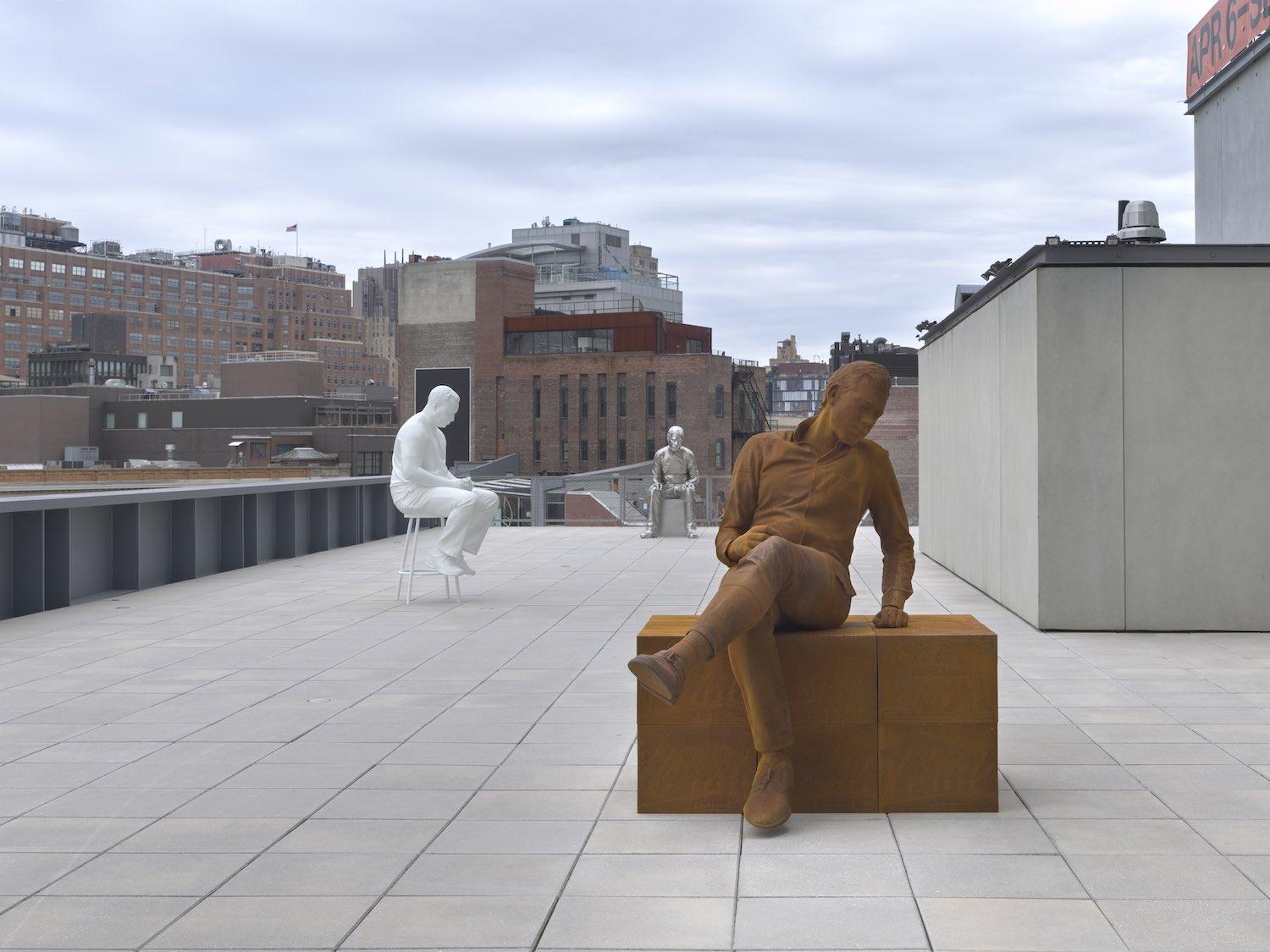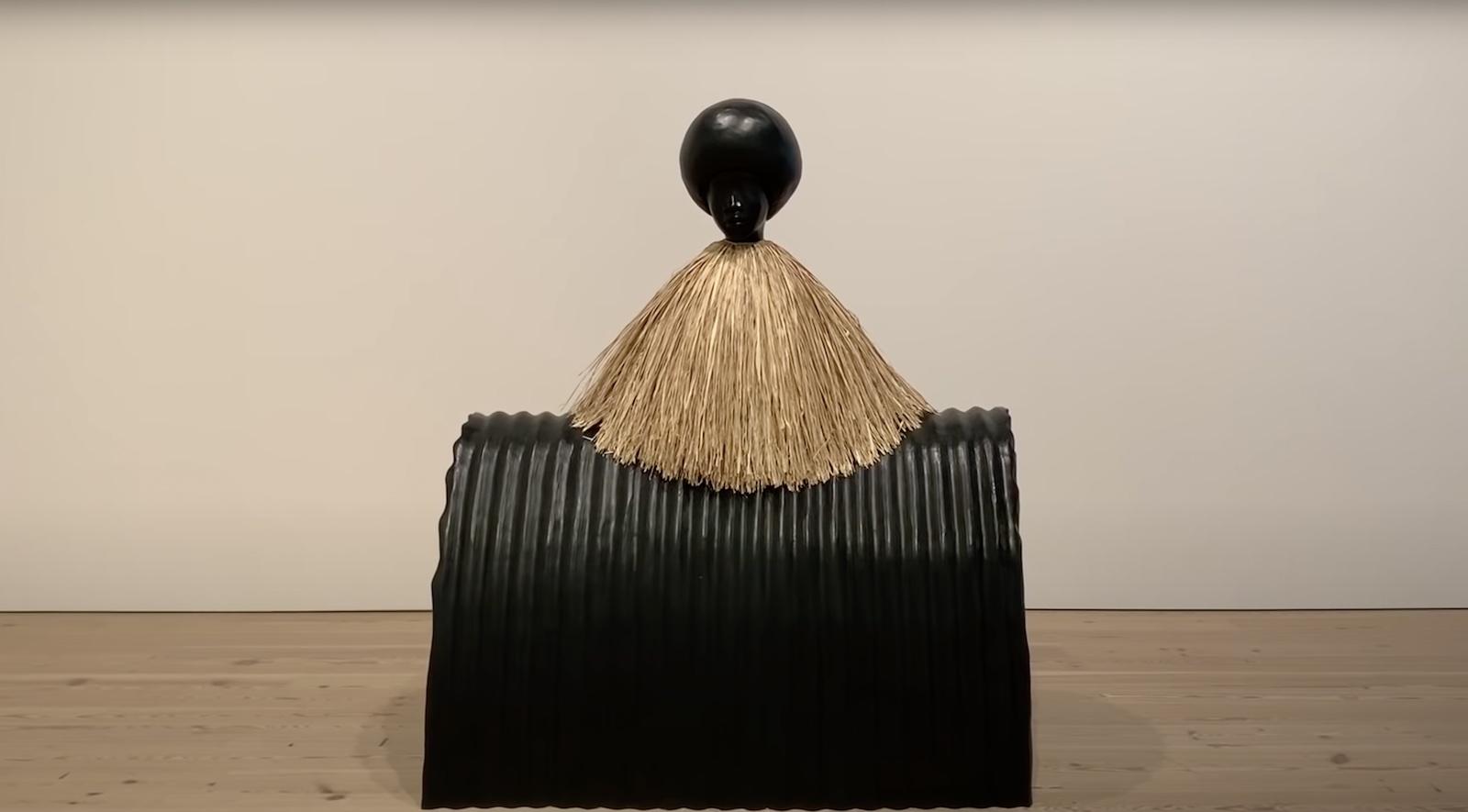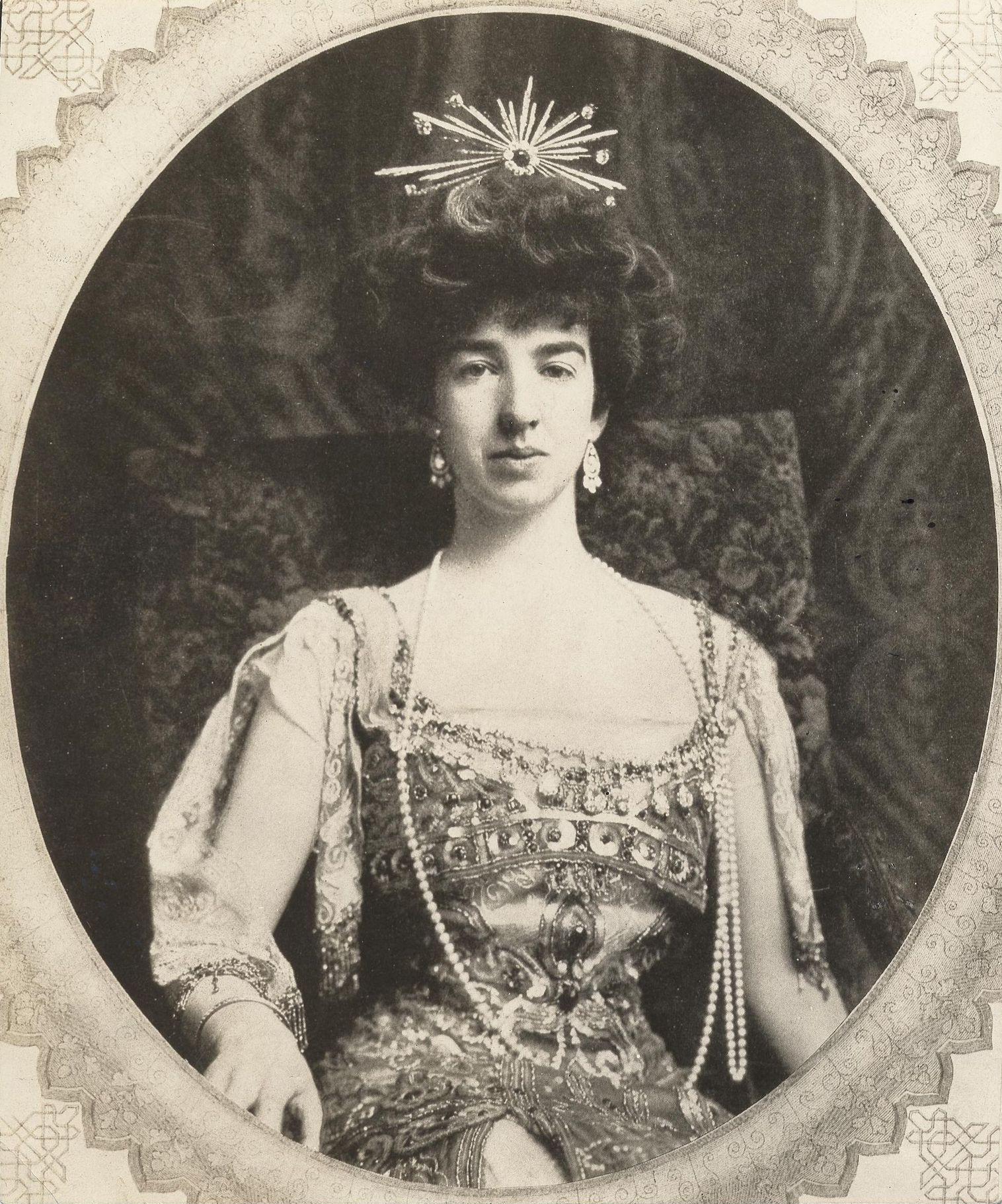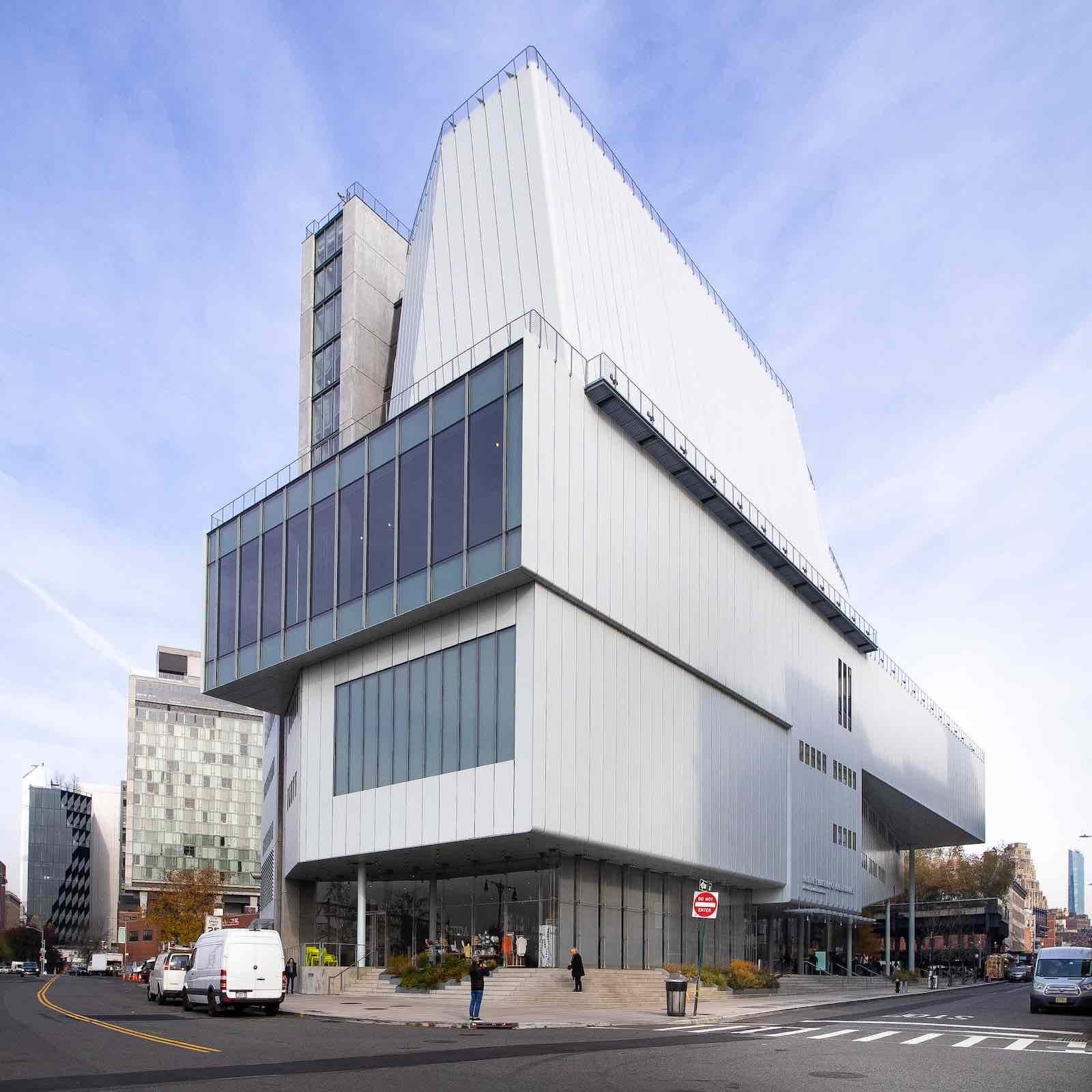It is important to acknowledge that the Biennial has also, over the years, regularly generated controversy and general upset—even over something as simple as its format. The first invitational art survey exhibition at the Whitney happened in 1932. Though established as a biennial event, it evolved into an annual affair in 1937 and remain so until 1973. Upon this transition back into a biennial event, The New York Times published this scathing review: “The Whitney, ever yearning to get with it, has tried to give us a playground—that is exactly what the biennial suggests, a kind of mail-order jungle gym—but we’ve outgrown it.”

Installation view of Whitney Biennial 2022: Quiet as It’s Kept (Whitney Museum of American Art, New York, April 6-September 5, 2022). From left to right: Charles Ray, Burger, 2021; Charles Ray, Jeff, 2021; Ninety-Nine Bottles of Beer on the Wall, 2021.
The much anticipated, yet long-delayed, Whitney Biennial 2022: Quiet as It’s Kept opened on April 6. Over the years, the show has become one of those signature events that serve as a touchstone in American artists’ careers. Inclusion in the exhibition can ceremoniously cast light on the career of a mature artist who might have been overlooked early on or it can launch one to stardom on the international stage.
Back in 2019, it did the latter for Simone Leigh. The artist, who just received the Venice Biennale 2022’s prestigious Golden Lion award, was selected for the 2019 Whitney event by curators Jane Panetta and Rujeko Hockley.

Still from the video Whitney Museum of American Art Biennial in NYC 2019 - Contemporary Art featuring work by Simone Leigh.

Gertrude Vanderbilt Whitney, c. 1909.
The Whitney was founded in 1930 by Gertrude Vanderbilt Whitney (1875-1942). Its first location was in a residential brick row house in Greenwich Village. The patron and sculptor had amassed a collection of over 700 pieces of American art, and when The Met turned down her offer to donate most of it, she decided to open her own museum.
In 1966, the museum moved into the Marcel Breuer-designed building on Madison Ave, which would become the scene of frequent artist protests, often triggered by the Biennial. In what many saw as blatant economic pandering, the Biennial’s 1976 theme revolved around bodybuilding as art and featured California’s future governor Arnold Schwarzenegger.
Despite such disdainful opinions, the theme proved to be wildly popular, drawing crowds from far beyond the art world. Though the choice was risky, it triggered fascinating questions regarding aesthetics, the body, and art history.
In 1987, feminist protests erupted when only twenty-four percent of the artists included were female. The Whitney tried to compensate by heavily featuring the included female artists in their promotional materials.

The Whitney Museum of American Art in November 2019.
Since 2015, The Whitney Museum of American Art has resided in Manhattan, between the High Line and the Hudson River. The striking asymmetrical building was designed by Renzo Piano. Despite the move, protests continue to follow the Biennial.
In 2019, a tsunami of negativity swamped the Whitney as artists began withdrawing from the Biennial in droves. The majority cited the museum’s resistance to calls to remove industrialist Warren B. Kanders from their Board of Directors. Kanders’ fortune, amassed via the manufacturing of tear gas and other military gear, was viewed by protesting artists as an abomination.
Even so, many artists remained in the show and fearlessly featured other political topics such as the NFL’s contemporaneous grappling with the pregame knee, a protest against police brutality. A week after the opening of the 2019 Biennial, Kanders resigned from the board.
As cultural institutions are increasingly scrutinized—be it for the ethics of their funding or the diversity of an exhibition—the Whitney Biennial will, this author hopes, continue to evolve with the times and remain one of America’s most important showcases of the art of the moment.




























